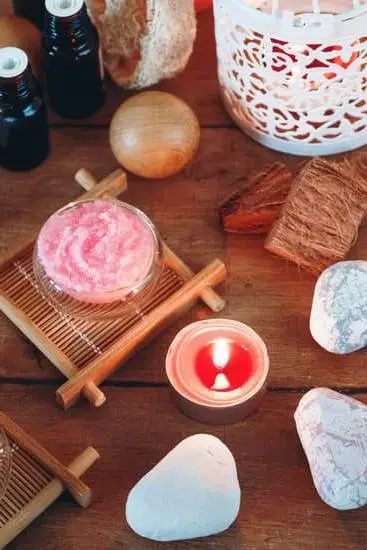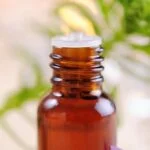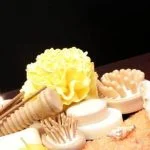Are you looking to create a tranquil and healing space right in your backyard? Welcome to the world of essential aromatherapy gardens, where the delightful scents of various plants are not only a treat for the senses but also have numerous health benefits.
From reducing stress and anxiety to promoting better sleep and relaxation, an essential aromatherapy garden is a wonderful addition to any home. In this article, we will explore the many benefits of aromatherapy and how you can create your own aromatic haven right outside your door.
Aromatherapy has been used for centuries as a natural way to promote physical and emotional well-being. By harnessing the power of essential oils extracted from different plants, aromatherapy can help improve mood, reduce pain, and even enhance cognitive function. With the right selection of plants and proper garden maintenance, you can cultivate an essential aromatherapy garden that not only looks beautiful but also serves as a source of natural healing.
In this section, we will take a closer look at the world of essential aromatherapy gardens. We will discuss the key principles of aromatherapy and how it can benefit both mind and body.
We will explore various plants that are essential for creating an aromatic garden, as well as tips for designing and organizing your garden layout. Whether you are new to aromatherapy or a seasoned enthusiast, this guide will provide valuable insights into the wonderful world of essential oils and their uses.
Selecting the Right Plants
When creating an essential aromatherapy garden, it is crucial to select the right plants that will provide the necessary ingredients for making your own aromatherapy oils and products. The following key essential plants are perfect additions to any aromatherapy garden:
- Lavender: Known for its calming and soothing properties, lavender is one of the most popular and versatile aromatherapy plants. It can be used in essential oil blends, bath products, and even herbal teas.
- Rosemary: This aromatic herb is not only great for cooking, but it also has stimulating and invigorating properties, making it a valuable addition to an aromatherapy garden.
- Peppermint: With its refreshing and cooling effects, peppermint is ideal for use in relieving headaches, muscle aches, and digestive issues.
- Chamomile: This gentle and relaxing herb is often used in aromatherapy for its calming effects on the mind and body.
In addition to these key plants, other essential options for an aromatherapy garden include lemon balm, geranium, eucalyptus, and jasmine. These plants not only add fragrance to your garden but also serve as effective remedies for various physical and emotional ailments.
To ensure a successful essential aromatherapy garden, it’s important to consider factors such as climate suitability, soil type, sunlight requirements, and space availability when selecting the right plants. Researching each plant’s specific needs will help you create an optimal environment where these key essential plants can thrive.
By carefully choosing the right plants based on their individual therapeutic properties, you can create a diverse collection of botanical ingredients that will enhance your overall experience with your very own essential aromatherapy garden.
Creating the Perfect Garden Layout
Designing the layout of your essential aromatherapy garden is crucial in creating a harmonious and beneficial space. When planning your garden layout, it’s important to consider the specific needs of the essential plants you have selected, as well as how you intend to use the garden for aromatherapy purposes.
One essential aspect to consider when designing your aromatherapy garden is the location. Most essential aromatherapy plants thrive in sunny and well-drained areas, so be sure to choose a spot that receives plenty of sunlight throughout the day. Additionally, consider any natural elements such as wind patterns and water sources that may impact the overall health of your plants.
Another key consideration when organizing your aromatherapy garden is companion planting. Certain aromatic plants complement each other and can even help deter pests or attract beneficial insects. For example, lavender and rosemary are known to enhance each other’s growth while also repelling unwanted pests like mosquitoes.
By utilizing these design principles and considerations, you can create a beautiful and functional space that will provide an abundance of aromatic benefits for your physical and emotional well-being.
| Aspect | Description |
|---|---|
| Location | Choose a sunny and well-drained area for your garden. |
| Companion Planting | Select plants that complement each other and repel pests. |
Essential Oils and Their Uses
When it comes to creating an essential aromatherapy garden, the selection of plants is crucial. Each plant provides unique aromatherapy benefits, and choosing the right ones will ensure that you have a diverse range of essential oils at your disposal. Here are some key essential plants for your aromatherapy garden:
- Lavender: Known for its calming and relaxing properties, lavender essential oil is perfect for reducing stress and promoting better sleep.
- Peppermint: Peppermint oil is invigorating and can help with mental clarity and focus. It also has pain-relieving properties.
- Rosemary: A versatile herb, rosemary essential oil can improve concentration and memory. It also has stimulating and uplifting effects.
- Chamomile: Chamomile oil is often used for its soothing and calming effects, making it great for relaxation and reducing anxiety.
Understanding the different aromatherapy oils available to you is essential in harnessing their full potential. Each essential oil has its own unique properties and benefits. For example:
- Eucalyptus: Eucalyptus oil is known for its decongestant and anti-inflammatory properties, making it effective for respiratory issues such as colds and sinusitis.
- Frankincense: Frankincense essential oil has been used in traditional medicine for its anti-inflammatory, antiseptic, and astringent properties, making it beneficial for skin care.
By incorporating these key plants into your essential aromatherapy garden, you can access a wide range of essential oils with various therapeutic benefits leaving you feeling refreshed after each use.
Aromatherapy Garden Maintenance
Regular Watering and Soil Care
One of the key aspects of maintaining a thriving aromatherapy garden is to ensure that the plants are well-watered and that the soil provides the necessary nutrients. Different essential plants have different watering needs, so it is important to research each plant’s specific requirements.
In general, most essential plants prefer well-drained soil, so be sure to use a good-quality potting mix or amend your garden soil accordingly. Regularly checking the moisture level of the soil and providing water as needed will help keep your plants healthy.
Weeding and Pest Control
Aromatherapy gardens, like any other garden, can be susceptible to weeds and pests. Weeds compete with essential plants for nutrients and can affect their growth, so regular weeding is essential. Additionally, pests such as aphids or mites can damage the plants if not properly controlled. Consider using natural pest control methods such as introducing beneficial insects or using homemade remedies like neem oil spray. Keeping on top of weeding and pest control will help ensure that your aromatherapy garden thrives.
Pruning and Harvesting
Proper pruning is important for maintaining the health of your essential plants. Regularly trimming back overgrown branches or dead foliage can encourage new growth and improve air circulation within the garden. It is also crucial to know when and how to harvest your aromatherapy plants to maximize their potency and aroma.
Research each plant’s specific harvesting requirements and use sharp, clean tools to gather the leaves, flowers, or stems as needed. Proper pruning and harvesting practices will contribute to the overall health and vitality of your aromatherapy garden.
Harvesting and Storing Aromatherapy Plants
When it comes to creating an essential aromatherapy garden, harvesting and storing your plants properly is essential to maintaining their aroma and potency. The first step in harvesting your plants is to determine the best time for each type of plant.
For example, lavender should be harvested when about half of the flowers on the stem have opened, while rosemary can be harvested at any time during the growing season. It’s important to research each plant in your garden to understand the best time for harvesting in order to preserve their essential oils.
Once you have harvested your plants, proper storage is crucial to maintain their aroma and potency. The most common method for preserving aromatherapy plants is air drying. This involves tying small bundles of herbs together and hanging them upside down in a dark, well-ventilated area.
Another method is using a dehydrator, which can speed up the drying process and help retain more of the plant’s beneficial properties. Additionally, some plants can also be preserved by making infused oils or vinegars that can be used for aromatherapy purposes.
Preserving the aroma and potency of your essential aromatherapy garden plants not only ensures that you have a steady supply of oils and herbs for personal use, but it also allows you to share or sell your products with others who are interested in natural healing remedies. Taking care when harvesting and storing your plants will ultimately enhance your overall experience with aromatherapy and its many benefits.
| Harvesting Tips | Storage Methods |
|---|---|
| Determine best time for each plant | Air drying |
| Research optimal harvest times | Using a dehydrator |
| Preserve essential oils | Making infused oils or vinegars |
DIY Aromatherapy Projects
Aromatherapy has been used for centuries as a natural and holistic approach to healing and relaxation. One of the best ways to enjoy the benefits of aromatherapy is by creating your own essential aromatherapy garden. Not only does this allow you to have a fresh supply of aromatic plants, but it also provides you with the opportunity to create DIY aromatherapy projects using your garden’s harvest.
Creating Homemade Essential Oil
One of the most popular DIY projects using your aromatherapy garden’s harvest is creating homemade essential oils. Essential oils are potent extracts from aromatic plants that can be used for a variety of therapeutic purposes, including stress relief, relaxation, and skincare. With just a few simple tools and the right ingredients from your garden, you can easily create your own essential oils at home.
Homemade Aromatic Candles
Another creative way to use your aromatherapy garden’s harvest is by making homemade aromatic candles. By combining beeswax or soy wax with essential oils extracted from your garden, you can create beautifully scented candles that not only provide a pleasant aroma but also offer the therapeutic benefits of aromatherapy when lit.
Natural Room Sprays and Diffusers
Lastly, you can use your aromatherapy garden’s harvest to make natural room sprays and diffusers. By blending distilled water or alcohol with your garden’s essential oils, you can create delightful room sprays that can freshen up any space in your home. You can also use reed diffusers or electronic diffusers to disperse the aroma of your homemade essential oils throughout your living space, promoting a calming and relaxing atmosphere.
Overall, there are countless creative ways to use the harvest from an essential aromatherapy garden. Whether it’s creating homemade essential oils, aromatic candles, or room sprays and diffusers, having an abundance of aromatic plants at your disposal opens up a world of possibilities for DIY aromatherapy projects.
The Healing Power of Aromatherapy
In conclusion, creating an essential aromatherapy garden can provide a multitude of benefits for both the mind and body. The carefully selected plants in your garden can yield essential oils that have been found to alleviate stress, anxiety, and even physical ailments when used in aromatherapy techniques. By understanding the different aromatherapy oils and their benefits, you can harness the healing power of nature to improve your overall well-being.
The layout and maintenance of your essential aromatherapy garden are key factors in ensuring that your plants thrive and continue to produce high-quality essential oils. By following tips for garden organization and maintenance, you can preserve the aroma and potency of your plants’ harvest, allowing you to utilize them for various DIY aromatherapy projects.
Whether it’s crafting homemade candles or incorporating essential oils into bath products, these creative endeavors provide additional ways to enjoy the fruits of your labor.
Ultimately, by exploring the emotional and physical benefits of aromatherapy meditation and therapy techniques, you can tap into a natural form of healing that has been practiced for centuries. Whether through diffusing calming scents or using oils during massage therapy, the use of essential oils from your garden can contribute to a sense of calm and relaxation.
The holistic approach offered by an essential aromatherapy garden allows you to embrace the beauty and power of nature while caring for your own well-being.
Frequently Asked Questions
What Is Aromatherapy Garden?
An aromatherapy garden is a garden specifically designed to cultivate plants that can be used for their essential oils. These plants are often herbs and flowers known for their aromatic properties, such as lavender, rosemary, and eucalyptus.
What Plants Are Easy to Grow for Essential Oils?
Some of the plants that are easy to grow for essential oils include lavender, peppermint, rosemary, and lemon balm. These plants thrive in various climates and are relatively low-maintenance, making them ideal choices for beginners who want to start their own aromatherapy garden.
What Are the Side Effects of Aromatherapy?
While aromatherapy is generally considered safe when used properly, there are some potential side effects to be aware of. These can include skin irritation or allergic reactions to certain essential oils, as well as headaches or nausea if the oils are overused or inhaled in excessive amounts.
It’s important to use aromatherapy products cautiously and consult with a healthcare professional if you have any concerns.

Are you looking for a natural way to improve your health and wellbeing?
If so, aromatherapy may be the answer for you.





